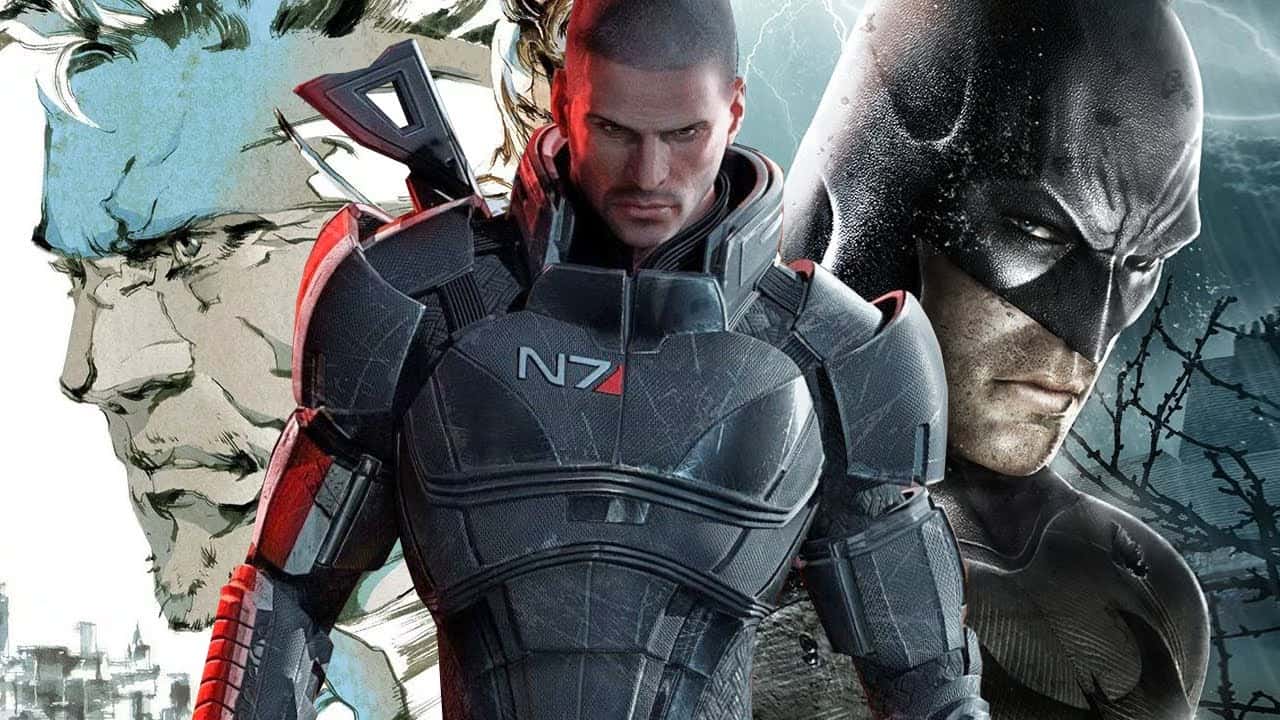If there’s anything we can learn from pop culture, it’s that audiences love things that come in threes. The trilogy is a longstanding entertainment tradition, and video games are no different. Several of the most iconic and long-running franchises in the medium can trace their beginnings back to an impactful initial trilogy of games that establish the characters, settings, and conflicts that are key to each series along with their overarching plot. The best video game trilogies start with a bang, carry players through a transformative and open-ended middle chapter, and then fully stick the landing in a triumphant and bombastic conclusion. Along the way, each title offers subtle enhancements and refinements to the core gameplay loop as well to make playing each game in the trilogy part of a singular core experience.
Occasionally, the temporal divide between the first and the last game in a trilogy will be so large that the series serves as a time capsule for the growth of video games as a medium, and these games transcend the simple experience of being interactive media to becoming something of a historical relic. Somehow, the games on this list manage to fit into both categories. These video game trilogies are at once excellent examples of cohesive and contiguous experiences that deserve to be played in their entirety while also remaining snapshots in time of the growth of the video game industry. In terms of their gameplay, story, and overall impact on the industry, these are the best video game trilogies of all time.
15. Tomb Raider
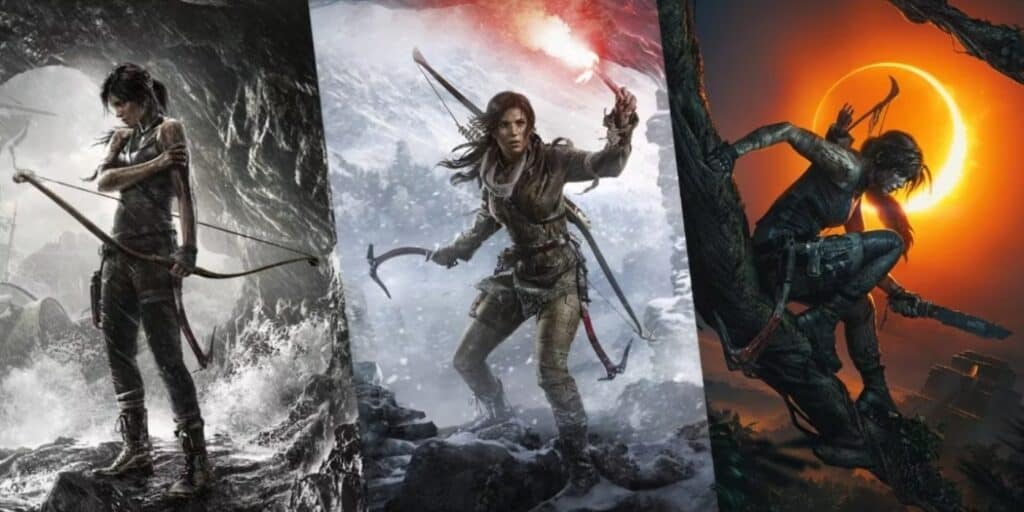
Starting things off is the incredible modern Tomb Raider trilogy, often referred to as the Tomb Raider “Survivor” Trilogy. Crystal Dynamics’ bold reboot of the aging Tomb Raider franchise nails the fundamental aspects of what players want to see in a Tomb Raider game while also dramatically reinventing the heroine Lara Croft and telling a more grounded story. Lara begins these games a victim and somewhat naive, and then we get to see her transform into the fearless treasure-hunting warrior that the past Tomb Raider games paint her as.
Witnessing that transformation is a core component of what makes the Survivor Trilogy so special, but the gameplay of these titles is nothing to scoff at either. The modern Tomb Raider games borrow a fair amount from other action-adventure titles the franchise originally inspired (such as Uncharted) and end up delivering some of the best third-person open-world adventures available with excellent traversal and combat mechanics across three varied settings.
14. Max Payne
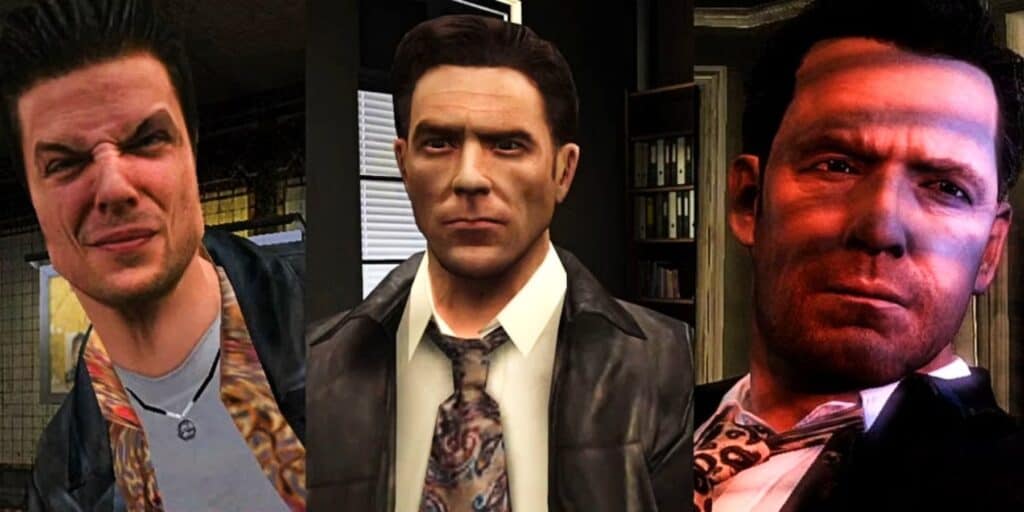
Remedy and Rockstar’s Max Payne trilogy is one of the best third-person shooting franchises and the first title in the series is the game responsible for popularizing the “bullet-time” mechanic. That alone earns Max Payne a spot on this list, but it’s the trilogy’s excellent character arc for its titular noir hero that makes these games so timeless. The first Max Payne is an impeccable third-person shooter with some of the best movement and gunplay at the time of its release, emulating the films of John Woo and popular action blockbusters like The Matrix. The second game in the series continues that trend while cleaning up the visuals, but it’s Rockstar’s first solo outing with the franchise and the final game in the trilogy that stands as the best in the series.
In the third Max Payne, players once again take on the role of the titular detective, who is now retired and working as a private investigator. After traveling to Brazil for a case, Max becomes wrapped up in a kidnapping and extortion plot that sees him revert to his old shooting and diving ways. What makes the third Max Payne so special, though, is that we see Max near the end of his rope after years spent on the brink, and understanding the character and what he’s been through helps to establish that a man with nothing to lose is the most dangerous man of all.
13. BioShock
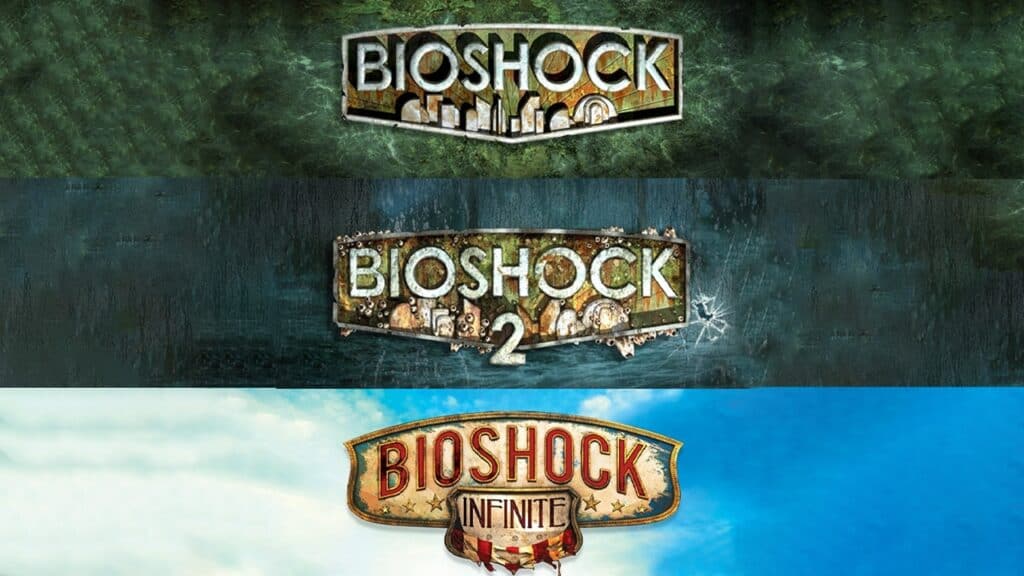
The BioShock trilogy is perhaps the greatest story-driven first-person shooter series, mixing satisfying gunplay and superhuman abilities with deeply philosophical science fiction plots. And, of course, when it comes to the BioShock games, the settings in which each entry takes place are arguably just as important as each game’s selection of heroes and villains. Both the underwater city of Rapture from BioShock and BioShock 2 and the airborne city of Columbia from BioShock: Infinite are two of the greatest first-person shooter playgrounds in the history of the genre, and the smart enemy AI and wide selection of abilities mean that no two encounters will ever be the same.
Beyond each title’s gameplay though, the BioShock games ask the player some important questions about the nature of free will and existence. Further, the way that BioShock: Infinite‘s ending subtly ties into the beginning of the first BioShock ends up creating a mind-blowing time loop that connects all three games in the franchise in a way that no other series has attempted before or since. Between their thought-provoking narratives, stunning art direction, and impeccable first-person shooter gameplay, the BioShock series is one that players need to experience at least once.
12. Crash Bandicoot
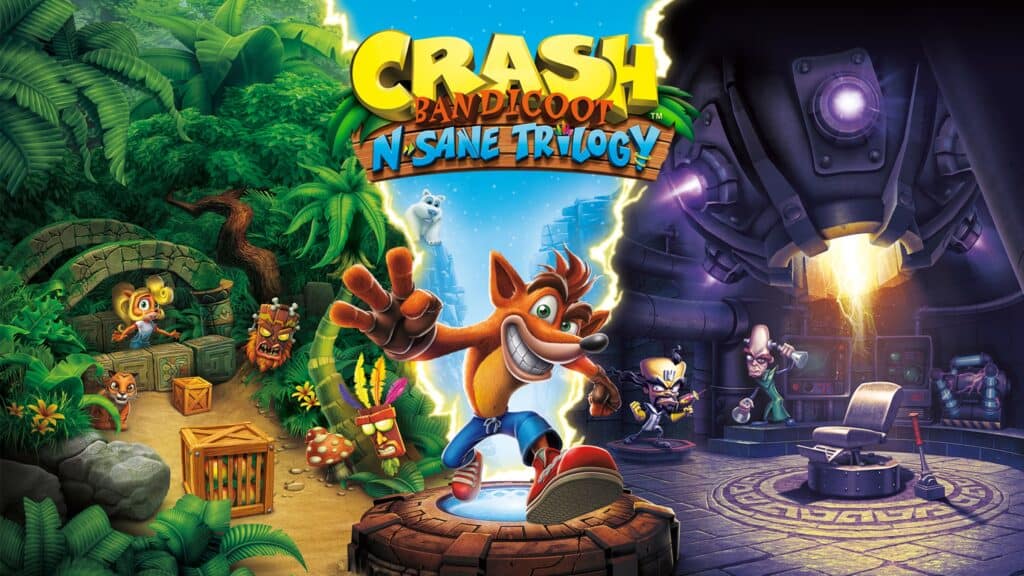
Though some 3D platformers were released before it, it wouldn’t be until the launch of Super Mario 64 that players would get their first experience with a 3D platformer done right. A short time later, though, Sony would enter the 3D platformer race courtesy of first-party developer Naughty Dog and the now-legendary Crash Bandicoot. The first Crash Bandicoot was one of the only games that could stand toe-to-toe with Mario’s first 3D outing, and the brilliance of its gameplay and pitch-perfect design and art direction helped make Crash the de facto PlayStation mascot in the 5th generation console wars.
Crash‘s success would end up being a huge system-seller for PlayStation, so of course Naughty Dog would need to follow up the initial game with some sequels. Both Crash Bandicoot 2: Cortex Strikes Back and Crash Bandicoot: Warped further evolve the platforming formula from the first game, introducing new mechanics, challenging boss fights, and some incredible audio and visual design that show how the series evolved in the course of a single console generation. Thankfully, the trilogy is easier to play now than ever with the Crash Bandicoot N-Sane Trilogy available on modern consoles and PC, and these games are just as fun now as they were almost 30 years ago.
11. Grand Theft Auto
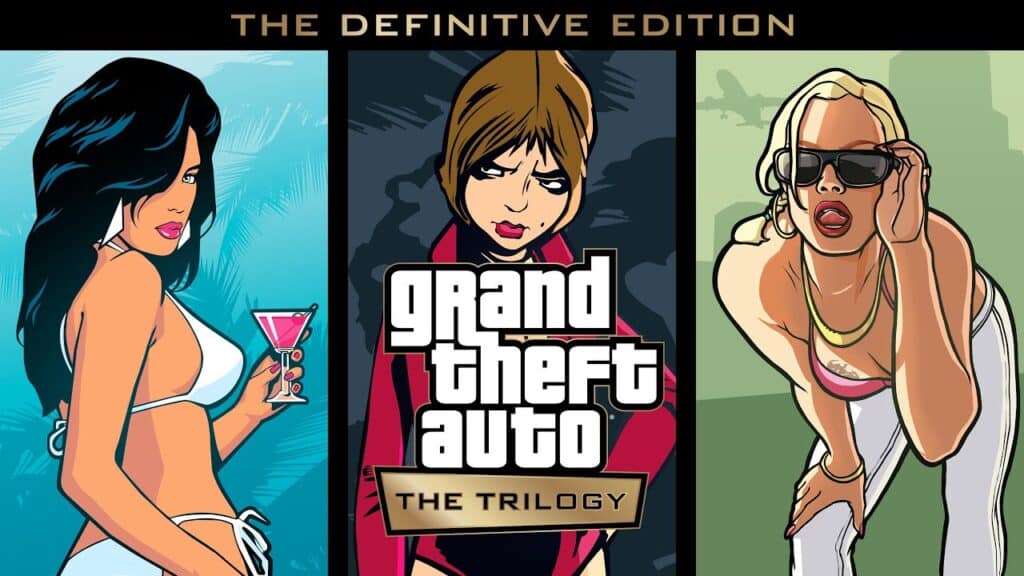
Even if a series isn’t necessarily the greatest franchise of games on a console, there’s something to be said for those titles that transcend the medium to become a pop culture phenomenon. Such is the case with the trilogy of Grand Theft Auto games on the PlayStation 2, which are both hugely important to the future direction of action game development and the transformation of video games from a niche hobby into a mainstream entertainment industry. Of course, these games also happen to actually be some of the best games on the PlayStation 2, offering up hundreds of hours of potential fun across their dense and entertaining open-world sandboxes.
Going from Grand Theft Auto and Grand Theft Auto 2‘s top-down perspective to the full 3D open-world of Grand Theft Auto III is as significant of a leap as the original Legend of Zelda to Ocarina of Time, signaling a massive paradigm shift in the way action games were designed and establishing the foundations of the modern-day open-world design template. Rockstar would continue iterating on that formula with its two sequels, and both games (Vice City and San Andreas) act as hilariously subversive commentaries on the excess of the 1980s and gang-fueled turmoil of early 1990s America, complete with best-in-the-medium era-appropriate soundtracks.
10. The Witcher
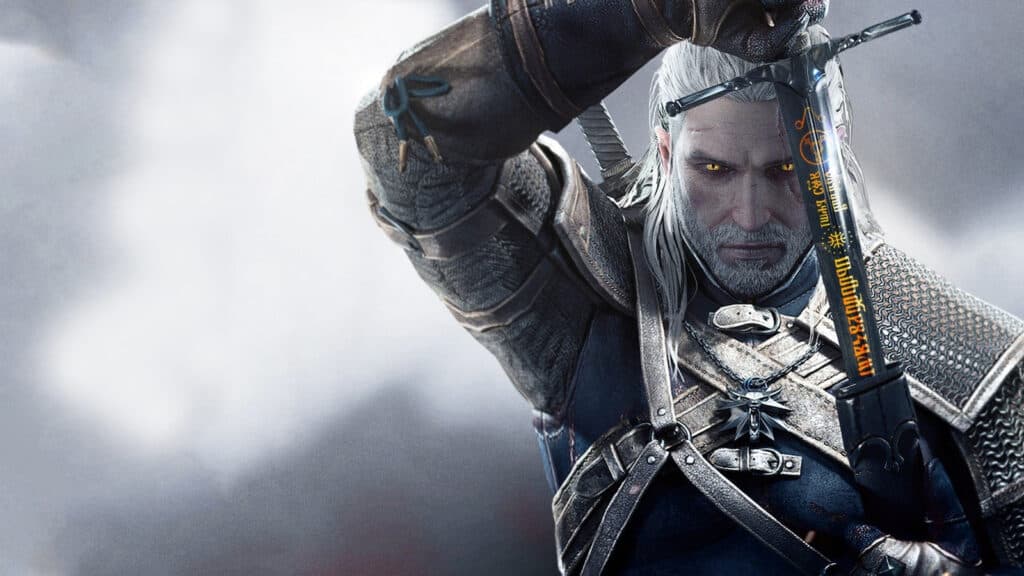
CD Projekt Red’s The Witcher series is both one of the best RPG trilogies and a history of the evolution of the genre itself. With each entry in the franchise, The Witcher would gradually transform from a somewhat janky cult classic into a Game of the Year-winning franchise representing the pinnacle of RPG gameplay and storytelling. Each of the games in the trilogy has excellent writing and character direction, which borrow heavily from the novel series the games are based on, but The Witcher 3 is undoubtedly the highlight of the trilogy and one of the greatest RPGs ever made. The first two games are not without their charm, but seeing how the franchise evolves between its first, second, and third entries is an interesting case study of how a studio can successfully iterate on a design template.
The secret to the success of The Witcher franchise is the games’ sense of world-building and character development, which make each of the interactive spaces that feature in the trilogy feel like real, lived-in places. Every sidequest and deviation from the main quest is worthwhile to at least some degree, and the combat is much more than just simple hack n’ slash fare that you might find in a standard action RPG. The Witcher games require strategy, planning, and consideration of all the choices available to the player, and the attention and intent that the games require from players makes them some of the best RPGs ever made.
9. Dark Souls
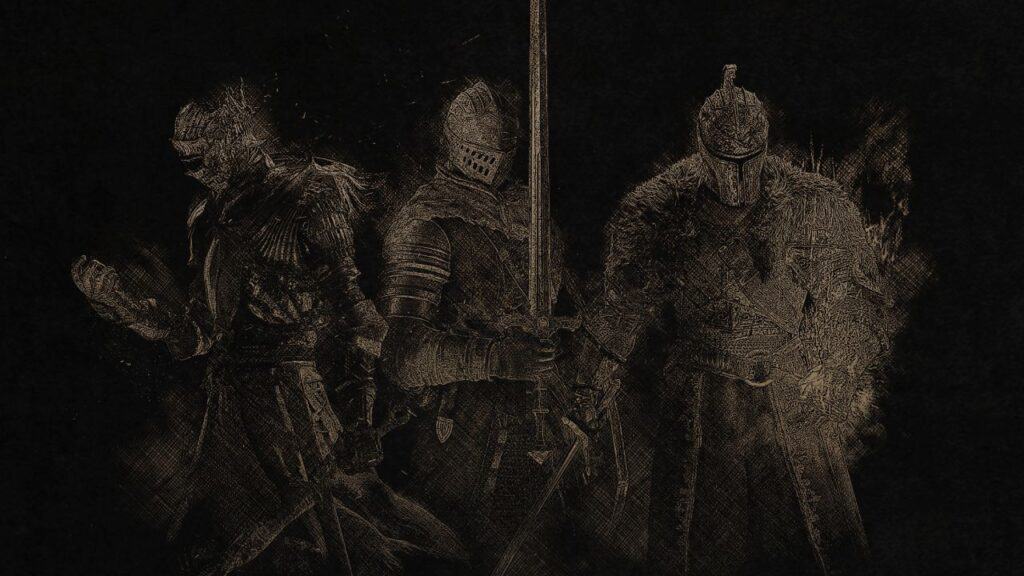
Much like how the PS2-era Grand Theft Auto trilogy would end up inspiring entire generations of open-world action games, FromSoftware’s Dark Souls trilogy is single-handedly responsible for birthing the most popular subgenre of modern action RPGs — the “Soulslike”. Building off of the template established in the studio’s 2009 cult classic Demon’s Souls, the Dark Souls games feature vast, interconnected dark fantasy worlds, methodical and mechanically complex combat, near limitless freedom in how players build and customize their characters, and plenty of incredible setpiece moments and jaw-dropping boss fights. Those elements are the more obvious parts of the Dark Souls games that have found their way into many other titles, but the intangible qualities of Dark Souls are what elevate the franchise to its “all-time” status.
The first Dark Souls would release at a time when action games were becoming more and more guided, holding the player’s hand through almost every action and providing little in terms of risk (and, by proxy, reward). Comparatively, Dark Souls was a breath of fresh air, refusing to tell the player anything and letting them fail time and again, learning from those failures to become a better player. Dark Souls didn’t just help transform trends in action RPG game design, it ushered in a new era of gaming that harkens back to the tough-but-fair nature of the 8 and 16-bit greats. Along the way, FromSoftware would grow as a studio and continue to evolve that formula until eventually bringing it to a satisfying close with the incredible Dark Souls III.
8. Super Mario Bros.
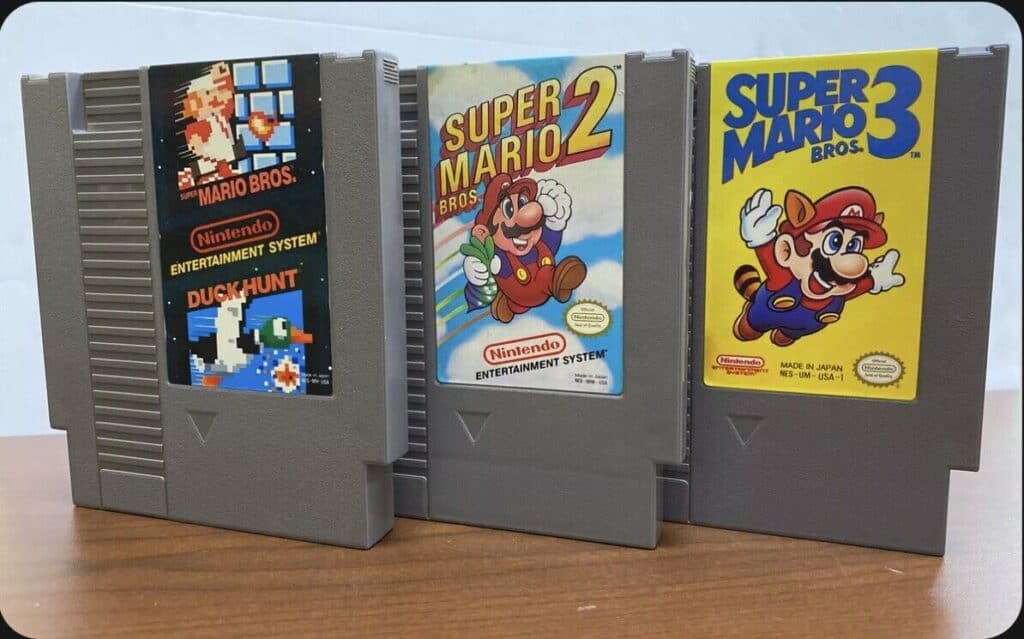
One of the first true trilogies in gaming is also one of its best, the initial three Super Mario Bros. games released on the NES. Each of these 8-bit platformers offers something different for Nintendo’s flagship franchise, with the original Super Mario Bros. providing the basic foundation of both the Mario series and the platforming genre in general. Where Super Mario Bros. introduced the world to Nintendo’s overall-wearing plumber and the Mushroom Kingdom, Super Mario Bros. 2 (at least, the Western version) transports players to the dream-like realm of Subcon. Rounding things out is the best game in the trilogy and one of the best titles on the NES, the timeless classic Super Mario Bros. 3.
Like some of the other franchises on this list, the gulf between the first and last games in the Super Mario Bros. series’ initial trilogy is wide. In just a few short years, series creator Shigeru Miyamoto would both invent and then perfect the 8-bit 2D platformer, and the incredible gameplay of Super Mario Bros. 3 would serve as the foundation on which the SNES’ killer app, Super Mario World, was built. The original Super Mario Bros. made both Nintendo and its mascot household names, but Super Mario Bros. 3 cemented the character and the franchise as pillars of the medium.
7. Dragon Age
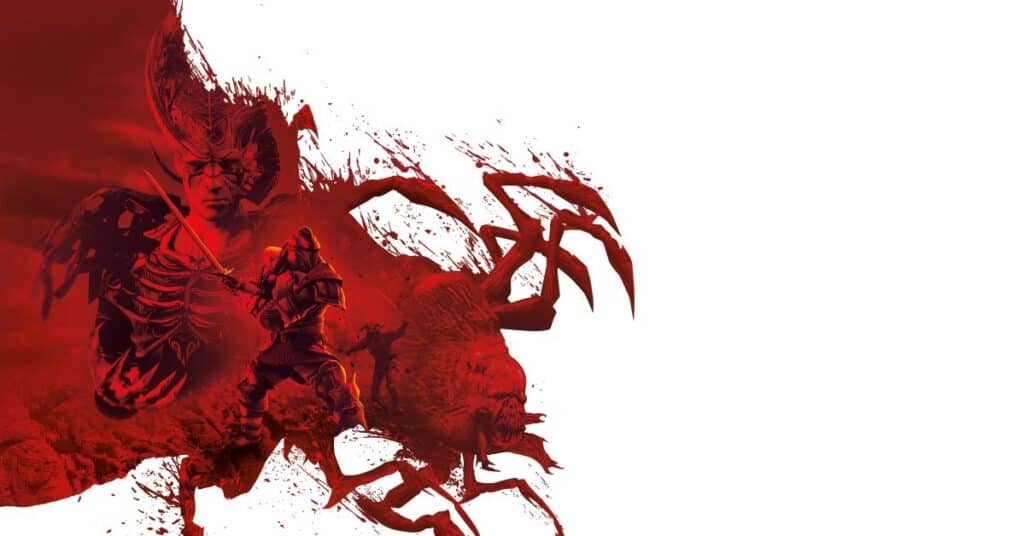
If there’s one thing that can be said about Canadian developer BioWare, it’s that the studio has a fundamental understanding of what makes a great RPG tick. Between its work on the legendary Baldur’s Gate games and the incredible Star Wars: Knights of the Old Republic, BioWare quickly established itself as a force to be reckoned with when it comes to crafting compelling role-playing games utilizing the Dungeons & Dragons rule set. While developing its science fiction space opera and magnum opus Mass Effect, a different team at BioWare would take on the challenge of creating a modern-day rendition of a high-fantasy RPG that called back to the mechanical depth and complexity of the studio’s earliest games. This series would, of course, be Dragon Age.
The Dragon Age games are unique in that they have a relatively low barrier to entry and do a great job of explaining their various systems and mechanics, only to later feature incredibly high skill ceilings and plenty of tactical and strategical depth for those who go looking for it. While the series would take a rare misstep with the action-oriented Dragon Age II, Dragon Age: Inquisition would end up being not only the best game in the trilogy but also win the very first honor of being the Game of the Year at The Game Awards’ inaugural 2014 ceremony. BioWare is planning to continue the franchise with the currently in-development Dragon Age: Dreadwolf, but that initial Dragon Age trilogy will forever stand as some of the studio’s greatest work.
6. Batman Arkham Trilogy
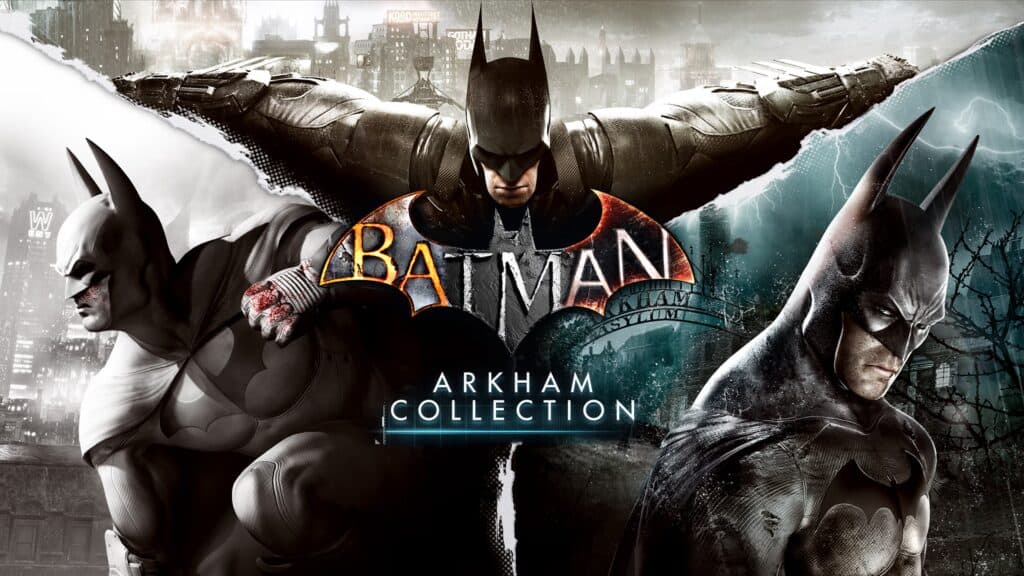
In terms of the greatest action game trilogies of all time, it’s really hard to beat Rocksteady’s incredible Batman: Arkham series. Beginning with Arkham Asylum, Rocksteady’s Batman trilogy is the first game featuring comics’ Caped Crusader that actually taps into the character’s place of being one of the greatest detectives of all time. Additionally, each game in the trilogy somewhat evolves the formula of the game that precedes it to push the envelope of what can and should be included in a Batman video game. Asylum is almost like a Batman-themed survival-horror game, City is an incredible open-world action title, and Knight evolves the formula even further to expand Batman’s traversal and combat abilities.
Both the gameplay and stories of the Batman: Arkham trilogy games understand what makes Batman tick, and as a result they end up being the template for the modern renaissance of superhero games. Without Batman: Arkham City, it’s likely we would have never gotten Insomniacs incredible Marvel’s Spider-Man games, and Rocksteady’s risk to make a series of games that honor and respect the characters and source material they adapt has raised the bar for all video game adaptations of comic properties.
5. Resident Evil
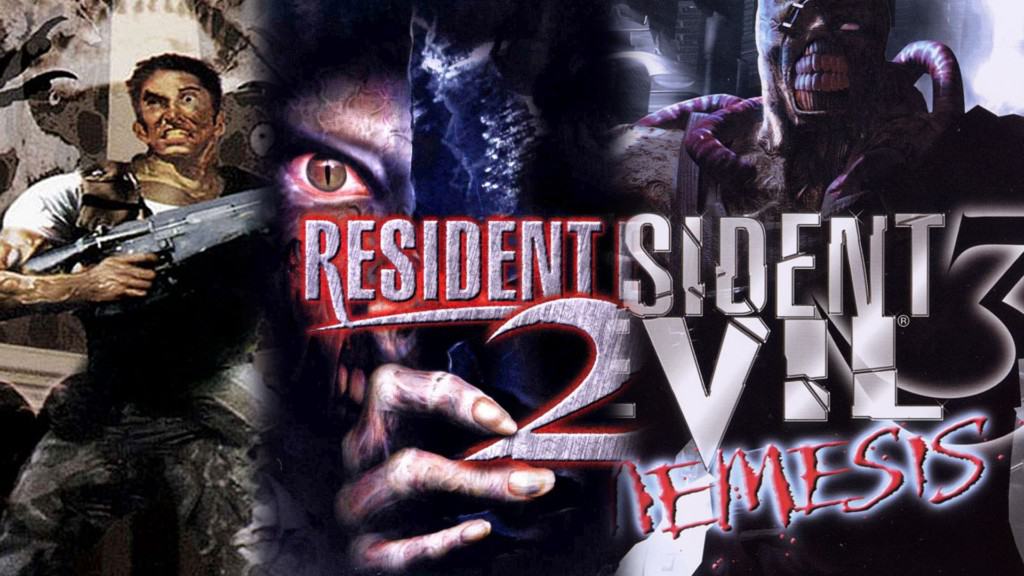
The Resident Evil series might be about to hit its 9th mainline entry, but the initial trilogy of games on the PlayStation 1 still serves as one of the best runs in all of gaming. The first Resident Evil would end up being a massive hit on the PlayStation while also showcasing that games were growing up along with the people playing them, so a sequel ended up being a forgone conclusion. After some false starts, Resident Evil 2 and Resident Evil 3‘s arrival in 1998 and 1999, respectively, would both improve the mechanics and gameplay of the original in meaningful ways and conclude the saga of Raccoon City and the zombie outbreak caused by the Umbrella Corporation.
In terms of both their gameplay and their stories, the Resident Evil games on the PlayStation 1 are hugely important to the rest of the franchise. The tank controls and fixed-camera perspectives of the first three games would eventually give way to a radical reinvention for the series in the fourth mainline entry, all while the characters and events from the first three Resident Evil games set the stage for the remainder of the series’ lore and the fates of its recurring heroes and villains. And, lest we forget, the original Resident Evil would help establish the conventions of modern survival-horror games, earning its place in the annals of history as one of the most important games ever made. That both its PS1 sequels are even better is just the icing on the cake.
4. God of War
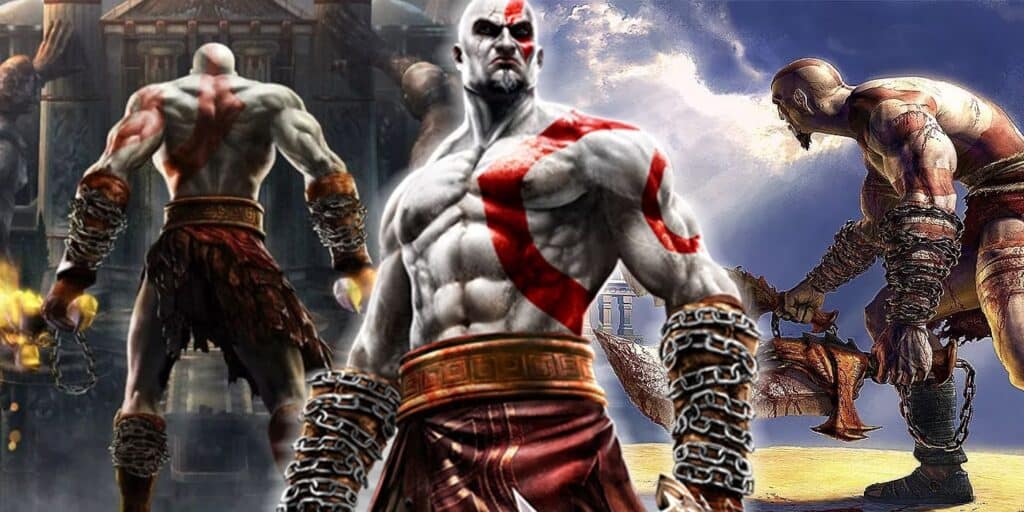
Both 2018’s God of War and God of War: Ragnarok are arguably the two best games to ever feature Sony’s angry, god-killing mascot, but without the original trilogy of God of War games they would have never been possible. The first saga of Kratos goes down as one of the best series of action games on the PS2 and PS3, helping to inject some much-needed life into the character action genre and single-handedly creating one of Sony’s most important first-party franchises. The original God of War features some truly addictive combat and incredible setpiece moments that show off their scale in a way that no other game before it had, and the sequel then turns everything players love about the first game up to 11.
The conclusion to the trilogy on PS3 would end up being a long time coming, but it closes out Kratos’ time as a figure in Greek mythology so well that it ends up being worth all the delays. Like the original game in the initial God of War trilogy, God of War III plays with size and scale in a way that few other games do, putting players into some of the most awe-inspiring environments and having them face off against enemies that take up the entire screen (or more). These games may be relics of a bygone era now, but they stand as a time capsule of one of the greatest arcs in the character action genre.
3. Metroid Prime
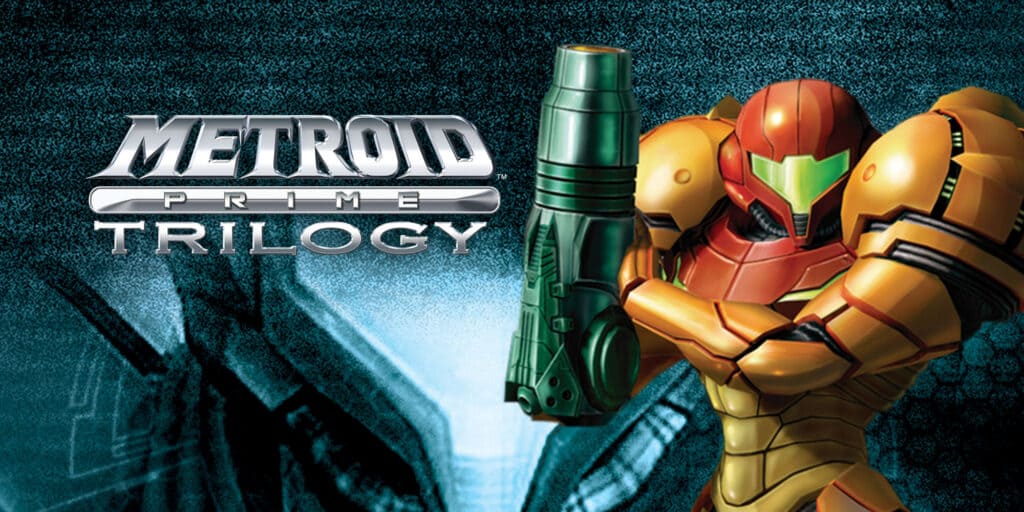
Taking the traditionally 2D Metroid series and translating it into 3D was a big risk, but it’s also one that inevitably paid off for Nintendo. Acting as the first, and some of the only, 3D Metroidvania games in existence, the Metroid Prime trilogy takes players back to an era before the events of the first Metroid and shows how Samus first comes across the Space Pirates and discovers their plans for galactic dominance through using the Metroids as biological weapons. The setup alone is enough to get any Metroid fan on board, but the incredible first-person shooter-meets-action platformer gameplay is what will get them to stick around until the credits roll.
Unlike some of the other trilogies on this list (whose third games tend to be the best entries in their respective series), the first Metroid Prime game stands as the best title in the series despite its sequels’ various improvements. Bigger isn’t always better, and Metroid Prime‘s attempt at making a 3D first-person Metroidvania in a singular interconnected map is somehow better than the dimension-swapping from Metroid Prime 2: Echoes or the planet-hopping of Metroid Prime 3: Corruption. Still, the Metroid Prime trilogy is one of the best self-contained series of first-party Nintendo games, and one can only hope that Metroid Prime 4 will see the light of day sooner rather than later.
2. Metal Gear Solid
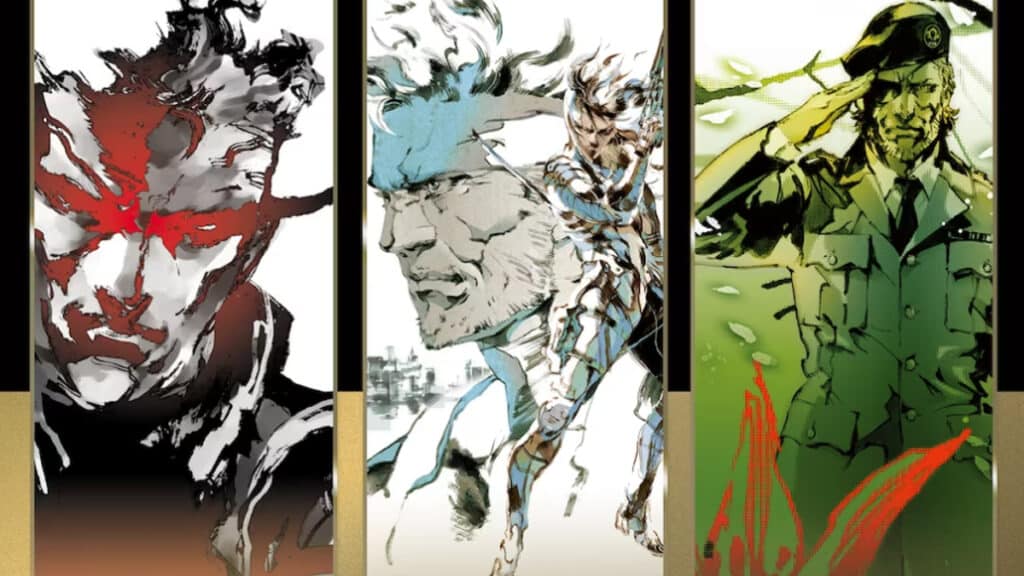
Hideo Kojima is one of gaming’s great auteurs and one of the masters of the medium, but it speaks to the quality of the first three Metal Gear Solid games that the luminary continues to have all of his other works judged against their merits. Taking the formula of the original MSX Metal Gear games (which subvert the action games of the era by forcing the player to avoid confrontation and sneak around enemies), the first Metal Gear Solid brings the franchise into 3D for the first time and practically single-handedly invents the modern stealth action game in the process. Along the way, the title both evolves how video game stories can be told and raises the bar for cinematic storytelling in the medium.
Its two sequels on PS2 follow suit, with Metal Gear Solid 2 continuing the story of Solid Snake and Metal Gear Solid 3 surprising players by taking them back to the Cold War and putting them in control of the series’ primary antagonist, Big Boss. Metal Gear Solid 3: Snake Eater stands as arguably the best game in the franchise and a fitting swansong to the series’ time on PS2. Not only does the title abandon nearly everything about the first two Metal Gear Solid games in favor of a wide-open jungle setting, but it also tells one of the most poignant and emotional stories in a series full of excellent narratives and powerful messaging.
1. Mass Effect
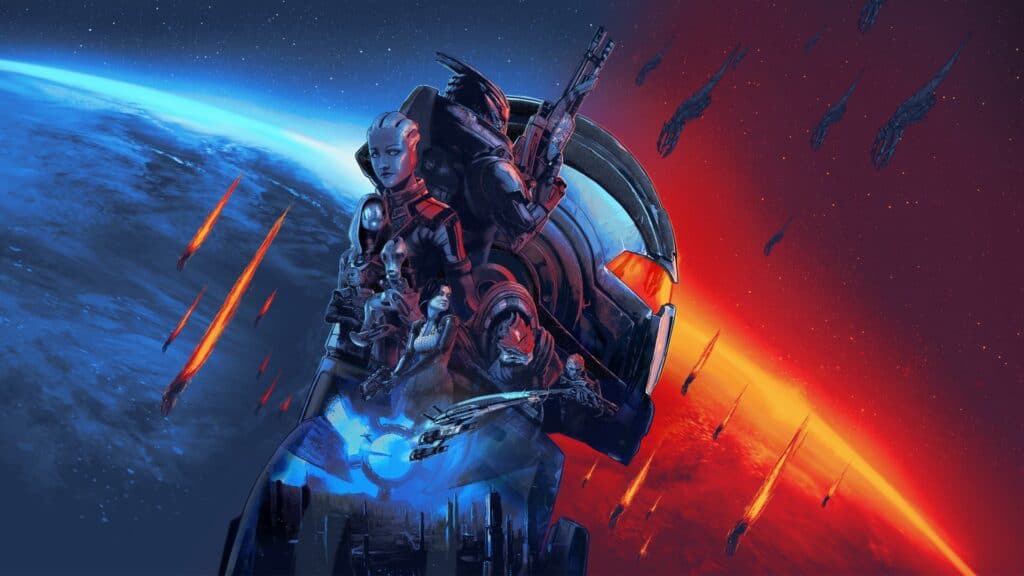
Few game trilogies connect in meaningful ways like BioWare’s epic Mass Effect saga, and it’s the impact and importance of the player’s decisions across all three games in the series that make it the best trilogy in all of gaming. Every choice in Mass Effect matters, and players get to see the repercussions of those choices play out throughout hundreds of hours in one of gaming’s greatest action RPG series. Like the best science fiction film trilogies, the first Mass Effect introduces players to the characters, the world they inhabit, and the game’s central conflict. The second entry then sees things take dark and unexpected turns, leaving things ambiguous and uncertain leading into the third and final entry. Then, against all odds, the final entry in the trilogy concludes things in a satisfying way that allows the player to reflect on the time they spent in this digital world.
What makes Mass Effect so special as both a trilogy and as a game series is the way that playing all three games feels like a singular, necessary experience. Playing only one part of the trilogy means missing out on dozens of hours of meaningful content, including character development and conversations that endear the player to their allies accompanying them on a seemingly impossible mission to save the galaxy. Along the way, the individual stories that make up each player’s time with Mass Effect take on as much importance as the main quest, if not more, making the end of the trilogy feel like a heartfelt goodbye to both the characters and the player.
The image featured at the top of this post is ©Mass Effect, Metal Gear Solid, Batman Arkham key art.
